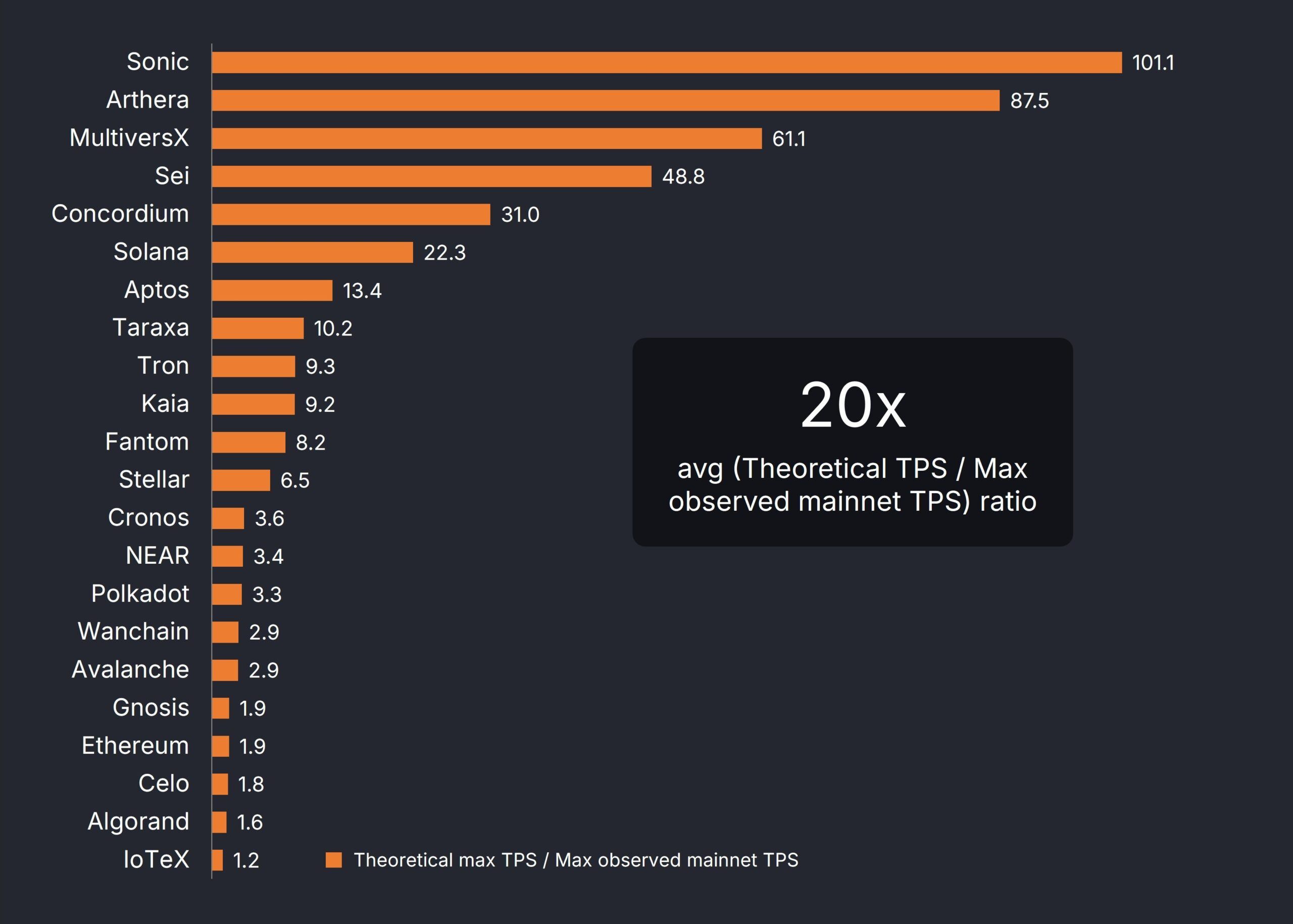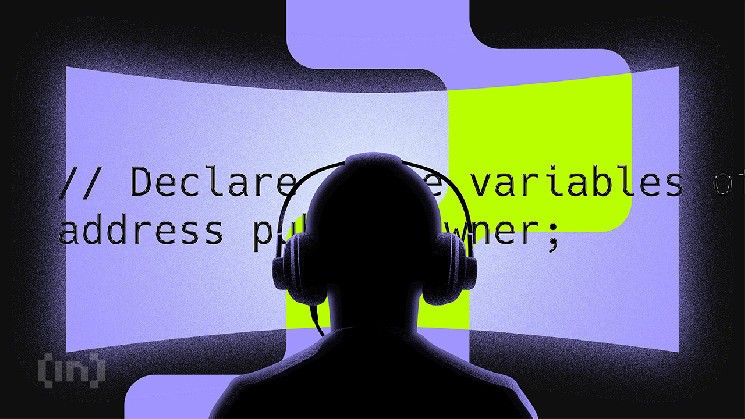The metrics used to measure outcomes will be deceptive when evaluating blockchain efficiency. As extra blockchain networks emerge, the general public will want metrics that concentrate on clear and effectivity slightly than exaggerated claims to tell apart them.
In a dialog with Beincrypto, Taraxa co-founder Steven PU defined that it’s changing into more and more tough to precisely examine blockchain efficiency, as many reported metrics depend on overly optimistic assumptions than evidence-based outcomes. To fight this wave of misrepresentation, the PU proposes a brand new metric referred to as TPS/$.
Why is the {industry} not a dependable benchmark?
The necessity for clear distinctions is growing with the variety of layer 1 blockchain networks. As varied builders drive blockchain velocity and effectivity, it turns into important to depend on metrics that distinguish efficiency.
Nevertheless, the {industry} nonetheless lacks dependable benchmarks for real-world effectivity, relying as an alternative on a sporadic, sentimental wave of hype-driven recognition. Based on PU, deceptive efficiency figures are at present saturating the market and obscuring true capabilities.
“Opportunists can simply harness simplified, exaggerated narratives and profit themselves. The attainable technical ideas and metrics are used to really promote many initiatives akin to TPS, ultimate delay, modularity, community node counting, execution velocity, execution velocity, parallelization, bandwidth capabilities, EVM-compatibility, and extra. beincrypto.
PU focuses on how some initiatives leverage TPS metrics and use them as advertising and marketing techniques to make blockchain efficiency sound extra interesting than the precise situations.
Inspecting the deceptive nature of TPS
Transactions per second, extra generally often known as TPS, are metrics that confer with common or persistent transactions {that a} blockchain community can course of and finalize per second underneath regular working situations.
However it usually misleadingly hypes the mission and gives a distorted view of the general efficiency.
“A distributed community is a fancy system that must be thought of as an entire and within the context of use circumstances. Nevertheless, the market has the horrifying behavior of simplifying and promoting particular metrics or features throughout a mission.
PU reveals that blockchain initiatives with excessive claims about single metrics like TPS can undermine decentralization, safety, and accuracy.
“For instance, take into account TPS. This one metric masks many different features of the community. For instance, how was TPS achieved? Was it sacrificed within the course of? You probably have one node, if you’re operating a WASM JIT VM, we name it a community. Assumptions like non-dispute, and so on., assume that every one transactions will be parallelized. After that, TPS is just not a foul metric.
Taraxa co-founders have revealed the extent of those inflated metrics in a current report.
A key contradiction between concept and real-world TPS
PU tried to show his level by figuring out the distinction between the most important historic and most theoretical TPS realized within the blockchain mainnet.
Of the 22 noticed permissionless and single-shard networks, PUs discovered, on common, a 20-fold hole between concept and actuality. In different phrases, the theoretical metric was 20 occasions the utmost noticed mainnet TP.

The Taraxa co-founders discovered a 20-fold distinction between the theoretical TPS and the mainnet TPS the place MAX was noticed. Supply: Taraxa.
“Metric overestimation (like TPS) is a response to the extremely speculative, narrative-driven crypto market. Everybody needs to put their initiatives and expertise in the very best gentle, so we need to run checks with an enormous variety of unrealistic assumptions to succeed in the bulging metrics.
In an try to counter these exaggerated metrics, PU developed his personal efficiency scale.
Introducing TPS/$: A extra balanced metric?
PU and his crew had been developed as follows: TPS will be realized on the mainnet/month-to-month $price of a single validator node, or at the price of a short-term TPS/$, assembly the necessity to enhance efficiency metrics.
This metric additionally considers {hardware} effectivity whereas assessing efficiency primarily based on verifiable TP achieved on the community's reside mainnet.
The numerous 20x hole between concept and precise throughput persuaded the PU to exclude metrics primarily based solely on assumptions or lab situations. He additionally aimed to elucidate how some blockchain initiatives inflate efficiency metrics by counting on pricey infrastructure.
“Printed community efficiency claims are sometimes inflated by very costly {hardware}. That is very true for networks with extremely centralized consensus mechanisms the place throughput bottlenecks transfer from community latency to single-machine {hardware} efficiency. Pu defined.
The PU crew discovered the minimal validator {hardware} necessities for every community and decided the associated fee per validator node. They later estimated month-to-month bills and paid explicit consideration to relative sizing when used to calculate greenback ratios.
“The TPS/$metric subsequently tries to repair two of the misinformation in maybe the worst class by forcing TPS efficiency into the mainnet and revealing inherent trade-offs for very costly {hardware},” PU added.
The PU highlighted it taking into consideration two easy identifiable traits: whether or not the community is just not permitted and is single-shard.
Licensed and unauthorized networks: Which decentralization do you promote?
The diploma of safety in a blockchain shall be evident by whether or not it operates underneath a permitted or unauthorized community.
Permitted blockchain refers to a closed community the place entry and participation is restricted to predefined consumer teams, requiring permission to take part from a government or trusted group. Anybody can take part on blockchains with out permission.
Based on PU, the previous mannequin is at odds with the philosophy of decentralization.
“If community validation membership is managed by a single entity, or there’s solely a single entity (all layer 2), then the allowed community is one other good metric. This means whether or not the community is definitely decentralized or not.
Networks with centralized authorities are usually extra susceptible to sure weaknesses, so consideration to those indicators proves to be essential over time.
“In the long term, what we actually want is a standardized assault vector battery for the L1 infrastructure. This helps to uncover the weaknesses and trade-offs of sure architectural designs. A lot of as we speak's mainstream L1 issues are at inexplicable sacrifices in safety and decentralization. They emerge organically in industry-wide requirements,” PU added.
Then again, understanding whether or not a community adopts a state in comparison with sustaining a single shade state reveals uniformity of knowledge administration.
State – Sharding vs. Single Nation: Understanding Knowledge Unity
In blockchain efficiency, latency refers back to the time delay earlier than sending a transaction to a community and confirming it and together with it in a block on the block of the block. Measures how lengthy it takes for a transaction to be processed and grow to be a everlasting a part of a distributed ledger.
By figuring out whether or not the community is adopting state or utilizing single-shard state, you may reveal lots about its latency effectivity.
A state shade community divides blockchain information into a number of impartial elements referred to as shards. Every shard operates considerably independently and doesn’t have direct real-time entry to the whole state of all the community.
In distinction, non-state shaded networks have a single shared state all through the community. All nodes can entry and course of the identical full dataset on this case.
PU identified that state shard networks are aiming to extend storage and transaction capability. Nevertheless, in lots of circumstances, transactions should be processed throughout a number of impartial shards, which frequently results in longer ultimate latency.
He added that many initiatives using a sharding method inflate throughput by merely replicating the community, slightly than constructing a really built-in and scalable structure.
“A state shade community that doesn’t share state is just making unconnected copies of the community. It’s clearly incorrect to argue which you can add all throughput throughout the copy and symbolize it as a single community, just by operating 1000 copies of the L1 community independently. You simply make an impartial copy,” PU mentioned.
Based mostly on his analysis on the effectivity of blockchain metrics, PU highlighted the necessity for elementary modifications in the best way initiatives are evaluated, funded and in the end succeeded.
What elementary modifications do blockchain evaluations require?
PU insights current a distinguished various within the Layer-1 blockchain house the place deceptive efficiency metrics more and more compete for consideration. A dependable and efficient benchmark is important to counter these misstatements.
“You recognize solely what you may measure, and now it's crypto, numbers look extra like hype than goal measurements. Standardized, clear measurements permit for straightforward comparisons throughout product choices, so that you perceive what trade-offs are making for builders and customers' use.
Adopting standardized, clear benchmarks will encourage knowledgeable decision-making and promote actual progress past merely marketed claims because the {industry} matures.


